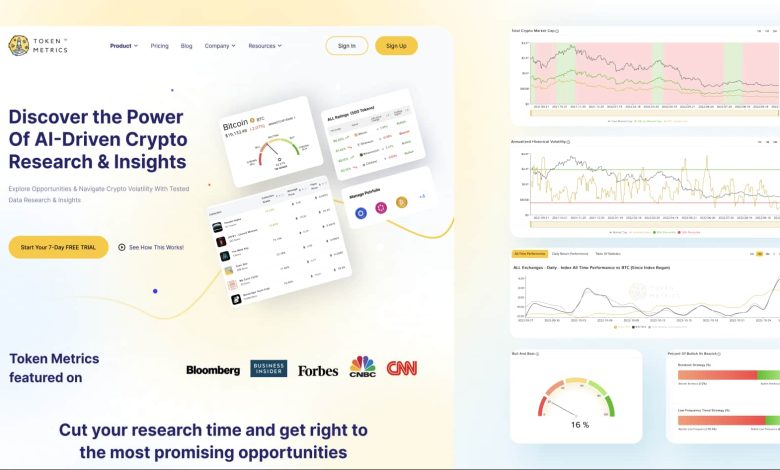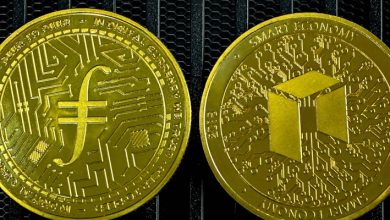Top Metrics for Evaluating Tokens

- Understanding the Importance of Token Metrics
- Key Metrics to Consider When Evaluating Tokens
- Comparing Token Metrics Across Different Projects
- The Role of Token Metrics in Investment Decisions
- Analyzing Token Metrics for Long-Term Growth Potential
- Common Mistakes to Avoid When Assessing Token Metrics
Understanding the Importance of Token Metrics
Understanding the importance of token metrics is crucial for investors looking to make informed decisions in the cryptocurrency market. Token metrics provide valuable data and insights into the performance and potential of a token, helping investors assess its viability and profitability. By analyzing key metrics such as market capitalization, circulating supply, total supply, and trading volume, investors can gain a better understanding of a token’s value and growth prospects.
Market capitalization is a key metric that reflects the total value of a token in the market. It is calculated by multiplying the current price of the token by its circulating supply. Market capitalization can help investors gauge the size and stability of a token, as well as its potential for growth. Circulating supply refers to the number of tokens that are currently in circulation and available for trading. Understanding the circulating supply of a token is important for assessing its scarcity and demand in the market.
Total supply, on the other hand, represents the maximum number of tokens that will ever be created. By comparing the circulating supply to the total supply, investors can determine the potential for inflation or deflation of a token, which can impact its value over time. Trading volume is another important metric that indicates the level of activity and liquidity in the market. High trading volume can signify strong interest and confidence in a token, while low trading volume may indicate limited market participation.
Overall, token metrics play a critical role in evaluating the investment potential of a token. By analyzing these key metrics, investors can make more informed decisions and mitigate risks in the volatile cryptocurrency market. It is essential to consider a combination of token metrics to gain a comprehensive understanding of a token’s performance and prospects. With the right knowledge and analysis, investors can identify promising opportunities and navigate the cryptocurrency market with confidence.
Key Metrics to Consider When Evaluating Tokens
When evaluating tokens, there are several key metrics to consider that can help investors make informed decisions. These metrics provide valuable insights into the token’s performance and potential for growth. By analyzing these metrics, investors can assess the token’s value and determine whether it aligns with their investment goals.
One important metric to consider is the token’s market capitalization. Market capitalization is calculated by multiplying the current price of the token by the total number of tokens in circulation. This metric provides an indication of the token’s overall value and can help investors gauge its popularity and liquidity in the market.
Another crucial metric to evaluate is the token’s trading volume. Trading volume refers to the total number of tokens that have been traded within a specific period, typically 24 hours. High trading volume indicates strong market interest in the token, while low trading volume may suggest limited liquidity and potential price volatility.
Additionally, investors should consider the token’s price performance over time. By analyzing the token’s price history, investors can identify trends and patterns that may indicate future price movements. It is essential to look for tokens that have demonstrated consistent growth and stability in their price performance.
Furthermore, investors should assess the token’s community and developer activity. A strong and engaged community, as well as active development team, can contribute to the token’s long-term success. By monitoring community forums, social media channels, and developer updates, investors can gain valuable insights into the token’s ecosystem and potential for growth.
In conclusion, when evaluating tokens, it is essential to consider a combination of key metrics to make well-informed investment decisions. By analyzing market capitalization, trading volume, price performance, and community activity, investors can assess the token’s value and potential for growth in the market.
Comparing Token Metrics Across Different Projects
When **comparing** token metrics across different projects, it is essential to look at various factors to determine the **value** and potential **growth** of each token. One key metric to consider is the **market** capitalization of the token, which gives an indication of the **overall** **worth** of the project. Another important metric is the **circulating** supply of the token, as this can impact its **price** and **liquidity** in the **market**.
Additionally, **evaluating** the **token** distribution and **vesting** schedules can provide insights into how **fairly** the tokens are distributed among **investors** and team members. **Analyzing** the **token** **utility** and **use** cases can also help **determine** the **long-term** **viability** of the project. **Comparing** the **token** metrics of different projects can **help** **investors** make **informed** decisions and **identify** **opportunities** for **potential** **growth**.
The Role of Token Metrics in Investment Decisions
Investors often rely on **token metrics** to make informed **investment decisions** in the **cryptocurrency** market. These metrics provide valuable insights into the **fundamentals** of a **token**, helping investors assess its **value** and **potential** for **growth**. By analyzing **token metrics**, investors can better understand the **risk** and **reward** associated with a particular **investment**.
One of the key **metrics** that investors consider is the **market capitalization** of a **token**. **Market capitalization** is calculated by multiplying the **current price** of a **token** by its **total supply**. This **metric** gives investors an idea of the **size** and **scale** of a **token** in the **market**, helping them gauge its **popularity** and **liquidity**.
Another important **metric** is the **token**’s **volume**. **Volume** refers to the **number** of **tokens** that are **traded** on a **daily basis**. High **volume** indicates **strong** **interest** and **activity** in the **token**, making it more **attractive** to **investors**. On the other hand, low **volume** may signal **limited** **liquidity** and **potential** **price** **volatility**.
**Token** **metrics** also include **technical** **indicators** such as **moving averages** and **relative strength index** (RSI). These **indicators** help investors **analyze** **price** **trends** and **momentum**, providing **insights** into the **strength** of a **token**’s **performance**. By **monitoring** these **indicators**, investors can make **informed** **decisions** on when to **buy** or **sell** a **token**.
In conclusion, **token metrics** play a crucial role in **investment decisions** in the **cryptocurrency** market. By **analyzing** **metrics** such as **market capitalization**, **volume**, and **technical** **indicators**, investors can **evaluate** the **potential** of a **token** and **make** **informed** **decisions** that **maximize** **returns** and **minimize** **risks**.
Analyzing Token Metrics for Long-Term Growth Potential
When evaluating tokens for long-term growth potential, it is crucial to analyze various token metrics that can provide valuable insights into the token’s performance and sustainability. By examining key metrics, investors can make informed decisions about which tokens to invest in and which ones to avoid. Some of the top metrics to consider include:
– **Market Capitalization**: Market capitalization is a key metric that reflects the total value of a token in circulation. It is calculated by multiplying the current price of the token by the total number of tokens in circulation. Tokens with a higher market capitalization are generally considered more stable and less volatile.
– **Trading Volume**: Trading volume refers to the total number of tokens that are bought and sold on a daily basis. High trading volume indicates a high level of interest in the token and can be a sign of strong market demand. Tokens with low trading volume may be more susceptible to price manipulation.
– **Token Supply**: Token supply refers to the total number of tokens that will ever be created. Tokens with a limited supply are often more valuable because they are scarce. On the other hand, tokens with an unlimited supply may be subject to inflation and devaluation over time.
– **Token Distribution**: Token distribution is an important metric that reflects how tokens are distributed among investors, developers, and other stakeholders. A well-distributed token is more likely to have a stable and diverse investor base, which can help support long-term growth.
By analyzing these and other key metrics, investors can gain a better understanding of a token’s long-term growth potential and make more informed investment decisions. It is important to conduct thorough research and due diligence before investing in any token to mitigate risks and maximize potential returns.
Common Mistakes to Avoid When Assessing Token Metrics
When assessing token metrics, there are several common mistakes that investors should avoid to make informed decisions. One of the most common mistakes is solely relying on the token price as the main indicator of a token’s value. While price is important, it should not be the only metric considered. Investors should also look at the market capitalization, trading volume, and circulating supply to get a more comprehensive view of the token’s performance.
Another mistake to avoid is overlooking the team behind the token. The team’s experience, expertise, and track record are crucial factors that can impact the success of a token. Investors should research the team members, their backgrounds, and their previous projects to assess their credibility and ability to deliver on the token’s promises.
Additionally, investors should be cautious of tokens with unrealistic or unsustainable token metrics. Some projects may promise high returns or quick profits, but these claims may not be backed by solid fundamentals. It is important to carefully evaluate the token metrics, whitepaper, and roadmap to ensure that the project is viable and has a clear plan for growth.
Lastly, investors should avoid falling for hype or FOMO (fear of missing out) when assessing token metrics. It is easy to get caught up in the excitement surrounding a new project or token, but it is important to remain objective and do thorough research before making any investment decisions. By avoiding these common mistakes, investors can make more informed choices and increase their chances of success in the crypto market.




